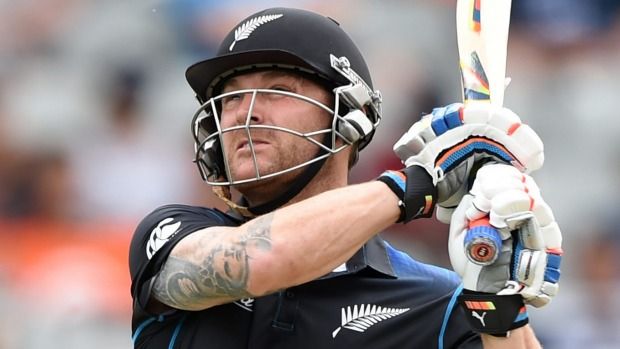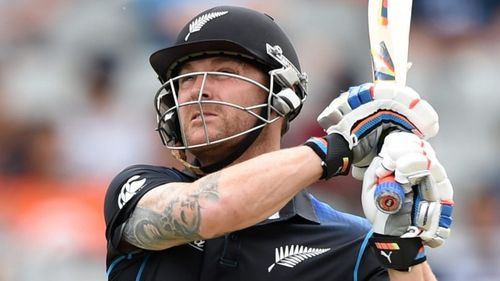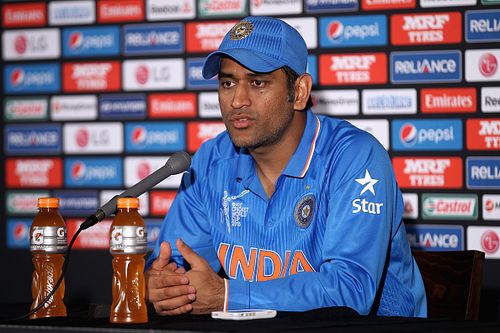
ICC Cricket World Cup 2015: A look at the two group toppers - New Zealand & India
Halfway into the league stages of the 2015 World Cup, both the groups have toppers that are yet to lose a match and that will most likely be the case at the end of the league stages too.
The toppers of Pool A and Pool B, New Zealand and India, respectively, are in contrast with each other. New Zealand have mostly relied on their fast bowlers in swinging conditions whereas India have seemed to find a man for every occasion. New Zealand have shown a few chinks in the armour before the knockout stages. India haven’t had any of their weaknesses exposed. Both teams will go into the knockouts with a few dilemmas and some questions unanswered. What are they? Let’s take a look.
New Zealand

Like Martin Crowe, many of us have the Black Caps as the favorites to win this World Cup. And why not? They are sitting on top of Group A already and have registered some dominating wins thus far. On 3 out of 4 occasions, they have bowled the opposition out in less than 40 overs and then chased the target down in around 25 overs.
Opening bowlers Tim Southee and Trent Boult are producing menacing bowling spells too often for the opposition’s comfort. Brendon McCullum is batting like a man possessed and Kane Williamson is clearly showing that he is on his way to becoming among the greatest batsmen of all-time, if not the greatest.
The leadership from McCullum has been attacking, too. The 33-yar-old has shown that he is not afraid to seize the moment. He is ready to have a go at the opposition at all times, in the process risking not having his best bowlers available during the death overs. For example, Boult and Daniel Vettori had bowled 8 overs each by the 22nd over against Australia. The plan to do so worked as they reduced the Australians to 106 for 9 by then.
Amid the Southee, Boult and McCullum juggernaut, the failures of the middle order to chase down smallish totals have gone under the radar. New Zealand did chase 146 in just the 25th over against Associates Scotland but unnecessarily lost 7 wickets doing so. They almost lost a thriller against Australia, losing 9 wickets while chasing 151 with 6 still needed to win. The cool-headed Williamson, who top scored against Scotland and saw his team through against Australia with a meaty blow to Cummins for six, thankfully saved them on both occasions.
As it seems, they will go into the quarters with some middle order niggles but still topping the table. They would have wanted to chase down a target of above 250 or so without much trouble against a stronger opposition at least once before going into the latter stages. Afghanistan and Bangladesh won’t really offer such a challenge especially when the remaining encounters are also in New Zealand.
New Zealand are making an emphatic statement, just like Sri Lanka did in 1996. They are likely to play both the quarters and semis in New Zealand where – with the kind of form they are in – they will probably find a way even in the face of adversity.
But the final is in Melbourne. It’s not Westpac or Eden Park for that matter; no swing and a huge ground. There is the risk of Southee and Boult not getting as much support as they do at home. What will McCullum do? What will New Zealand do? Will they trust that middle order and still go ballistic in the first 10 overs? Teams that persist with their approach usually find a way eventually. But if they lose, it looks really bad, careless and overconfident. Will New Zealand have the heart to stick to their approach? Will this prove to be their World Cup? Only time will tell.
India

The defending champions were not many people’s favorites till they actually started their campaign against arch-rivals Pakistan. Having won absolutely nothing in a couple of months leading up to the World Cup, they entered the marquee event with very little confidence under their belt. Other teams in Pool B were perhaps relishing the prospect of playing them. A couple of weeks later, India are on top of Group B with three comprehensive wins against Pakistan, South Africa and United Arab Emirates (UAE).
The most important thing about India is that they have clicked as a unit. They have always had a man for the occasion. Virat Kohli, Shikhar Dhawan, Suresh Raina, Ajinkya Rahane, Umesh Yadav, Mohammed Shami, Mohit Sharma, Ravichandran Ashwin; all these guys have had their moments and almost everyone has contributed to the wins. And if that is not enough, the fielding has gone a notch up to the extent that they out-performed South Africa in the field.
The league stages are where you would want to have some tough moments, some close wins, some nervy situations. India haven’t had that. And except for the West Indies, basically due to Chris Gayle, the other two games – against Zimbabwe and Ireland – are very much up for grabs. India will most likely go into the knockouts without being tested completely in any of the departments.
There are two teams in Group A that India failed to beat even once during the tri-series last month, Australia and England. Australia are unlikely to play India in the quarter-finals but there is every chance England will - provided of course that they qualify. England look in dismal form right now, but some of their bowlers have enjoyed success against the Indians. It will be an interesting contest if it comes down to that.
As per the law of averages, they are likely to have a bad day at some stage. If that happens to be in the knockouts, will they find a man for that situation? India’s death bowling was ridiculed to be among the weakest before the World Cup. It hasn’t been tested until now in this World Cup. How will it hold up when the time comes? Dhoni’s decisions have worked so far. What would be his response when some of his decisions start going wrong?
India won the Champions Trophy on foreign soil without really being tested up until the finals. Can India pull something like that again and defend the title? As always, only time will tell.